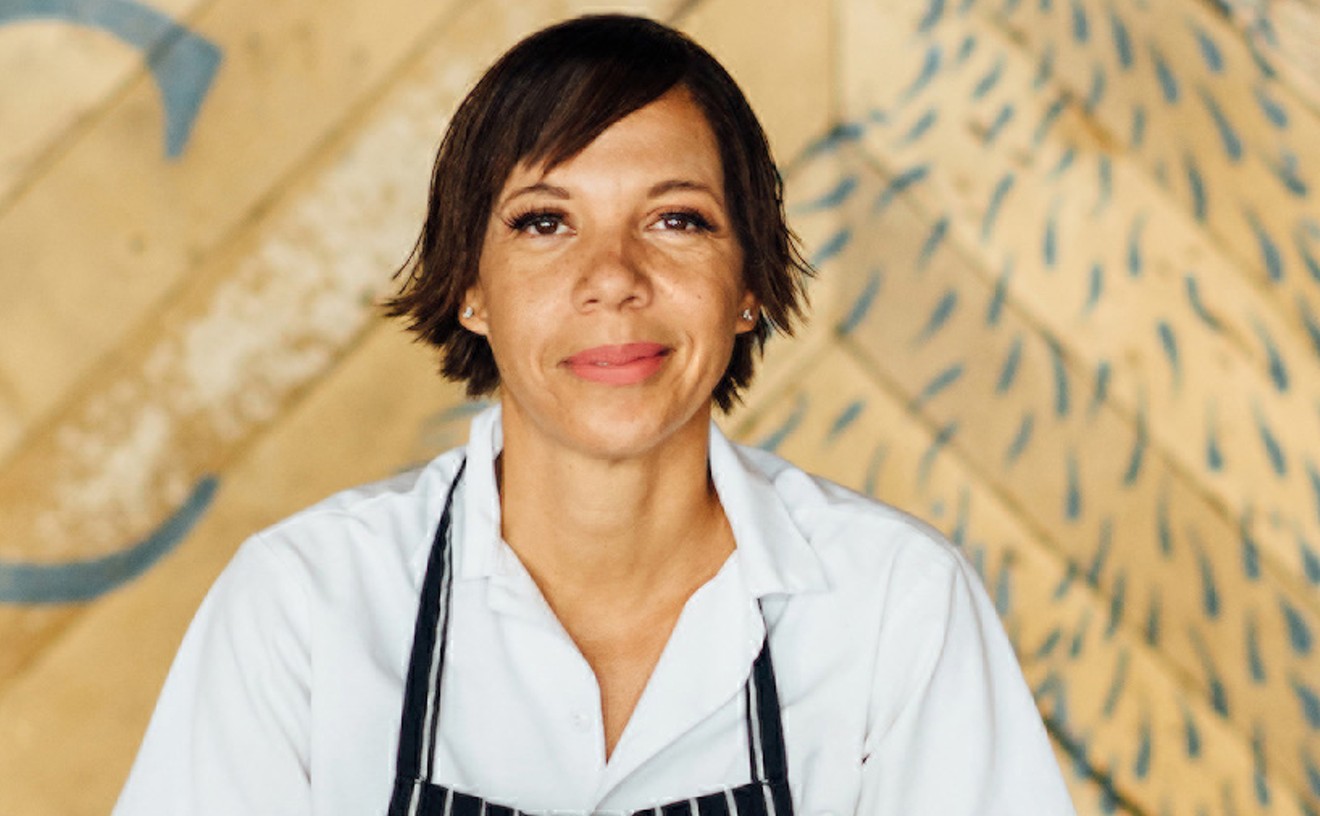The House of Bread, a twelve-by-sixteen-foot roofless dwelling smack in the middle of the museum's first floor, is a one-room frame house. Wood beams define the structure, which rises to a height of fourteen feet and resembles an open-air abode that Jews traditionally constructed in their fields during the harvest festival of Sukkoth, decorating the frame with the fruits and vegetables of their labors. In the case of House of Bread, the frame is a base to which all sorts of breads have been glued, stapled, or hung. Matzos panel the walls, which in turn are covered with Cheez-It "tiles." Mirrors and windows are lined with onion, pumpernickel, and raisin rolls. Baguettes and bagels compose the doorjambs and the foundation. For decorations, pretzel mosaics make palm trees, Cheerios add up to a Pointillistic dolphin, and enameled muffin tins hang on the walls.
"Yeast of Eden" (a collaboration between the Jewish Museum of Florida and Jerry Beck, artistic director of the innovative Revolving Museum in Boston) is not really the half-baked idea for a major museum exhibit that it sounds. More than 450 schoolchildren and teachers, representing grades four through twelve from fifteen Miami-Dade public schools took part in creating the project. The students collected family recipes and stories about bread that defined their own cultural experiences. They then translated them into artwork, both about bread and on bread, which was donated by various bakeries including Biga Bakery, Einstein Bros. Bagels, Renaissance Baking Company, as well as the Seminole Tribe of Florida.
Interspersed with the more crumb-y pieces are drawings, essays, recipes, and poems about baking, like the one by Bobby Golden of Dr. E.L. Whigham Elementary: "I need water to stay alive/I need sugar to be so sweet/I use dough to make bread/I love water like I love my family." Or the one by his classmate, Keisha Cox: "I want a little bit of candy/and a little bit of hugs/I'd like a little slice of pizza/and a slice of your love...." Sophisticated? No. But in children artistic talent can lie dormant as yeast until it is mixed with the right ingredients. Unlike more obvious campaigns such as VH1's "Save the Music," which is largely about soliciting money from guilty marching band members who are now parents, projects such as "Yeast of Eden" inspire students to learn about themselves, each other, and multimedia arts, all at the same time.
In fact in the catalogue that accompanies the installation (on sale for five bucks at the front desk, in addition to the entrance fee -- free for children under twelve), the museum's executive director Marcia Zerivitz notes that "like breads, people come in all varieties. The differences in breads are like the differences in people: Together they offer us a flavorful assortment." The exhibit is less about the Jewish religion than it is about celebrating the multiform community of South Florida, in which Jews have played a large part. Certainly this is the most concrete example of ethnic diversity possible, demonstrating that Miami is not only Yeast of Eden; it's South of France, North of Cuba, and West of Germany as well.
It's not too hard to pick up the ethnic heritage in many of the recipes. Sultana buns from Sri Lanka include "one-fourth pound" of those little relatives of the raisin, and should be eaten with a chickpea purée and Ceylon tea. Ingredients for a Venezuelan bread include German trigo and a spoonful of lecitina, while a Scotch shortbread from the Philippines takes a half-cup of powdered sugar and a touch of vanilla. Not to mention the Nicaraguan, Jamaican, Haitian and numerous Jewish varieties....
The exhibit, which took three years to come to fruition, marks a departure for the museum, most known for its permanent core display, "Mosaic," a collection of photographs and memorabilia that depicts 236 years of Jewish life in Florida. The deviation from more serious subjects, such as segregation and the Holocaust, proved so popular even the adults got involved. The Jewish Museum staff and docents volunteered some of their own bread recipes, which were collected by editor Suzanne Turchin into a pamphlet (available for a three-dollar donation).
Still, I can suggest some improvements. For instance where's that mouth-watering aroma of fresh-baked bread? Certainly not emanating from the shellacked house. And if the museum really wants to make some money, how 'bout selling some of those representative doughs from across our region? A bake sale could be just the ticket, but hey, I'd settle for a bag of bagel chips. Think of it as preventative measures: All that breadstuff is bound to make someone long for a nosh. And I'd hate to see the Cheerios Godzilla lose an eye.










